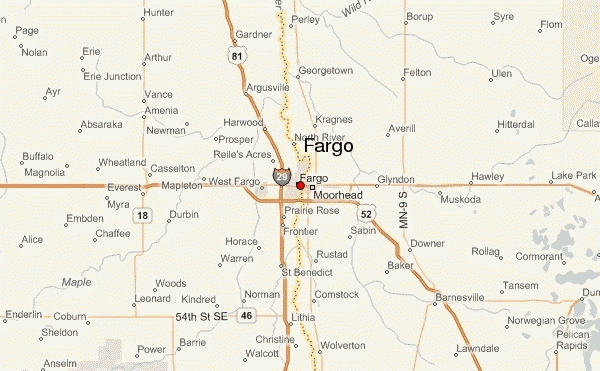Due largely in part to a booming economy, Fargo is one of the leading cities in new resident housing. Downtown Fargo, in particular, is the overwhelming beneficiary of strong economic and demographic indicators geared towards the housing market. Fundamentals in the area are too well balanced not to be encouraged. For all intents and purposes, Fargo real estate investing is expected to prosper in 2015, and beyond.
The Fargo real estate market has a median home price of $175,700, about $33,000 short of the national average. Not surprisingly, the average rate of appreciation across the country has out paced the city of Fargo. Nevertheless, Fargo remains an affordable destination that younger Americans will look to settle. Lower prices should also promote Fargo real estate investing. Over the last 12 months, Fargo homes have appreciated approximately 4 percent, whereas the national average was 5.7 percent.
Appreciation has permitted owners to increase housing activity. In fact, extra equity may be just what the Fargo housing markets needs to lead in the recovery. The following highlights how much equity has been gained relative to the year of the home’s purchase:
- Homes purchased in the Fargo housing market one year ago have appreciated, on average, by $9,376. The national average was $14,170 over the same period.
- Homes purchased in the Fargo housing market three years ago have appreciated, on average, by $29,406. The national average was $53,857 over the same period.
- Homes purchased in the Fargo housing market five years ago have appreciated, on average, by $46,492. The national average was $48,036 over the same period.
- Homes purchased in the Fargo housing market seven years ago have appreciated, on average, by $47,093. The national average was $13,870 over the same period.
- Homes purchased in the Fargo housing market nine years ago have appreciated, on average, by $58,185. The national average actually decreased $2,822 over the same period.
While the Fargo real estate market is doing well, there is no denying that has gotten to be where it is today because of the local economy. The job sector, in particular, has very strong fundamentals supporting the whole economy – the most impressive being the city’s unemployment rate. Coming in at under 3 percent, unemployment in Fargo is better than most of the country’s popular metros. While the unemployment rate remains unchanged from a year ago, it is low enough to warrant excitement. In fact, the national unemployment average is about 5.6 percent. In addition to the unemployment rate, Fargo’s job growth rate continues to impress. Recent data puts the job growth rate at 3.8 percent over the last 12 months. That is exactly twice as much as the national average. Suffice it to say, Fargo’s job sector will continue to promote healthy supply and demand. As a result, Fargo real estate investing remains prominent.
As if strong fundamentals were not enough to promote Fargo real estate investing, affordability is historically strong. In fact, affordability has improved in the face of recent appreciation. Recent data suggests that Fargo homeowners allocate about 7.9 percent of their monthly income to mortgage payments. The national average is nearly twice that rate, at 15.1 percent.
According to RealtyTrac, the number of foreclosures in Fargo increased 100 fold over the course of a month. However, as it stands, foreclosures in the city are down 33 percent year-over-year.
Fargo has a number of popular neighborhoods that real estate investors should keep an eye on. However, Trulia has done the legwork and identified the most popular neighborhoods for us. The following list represents the top 5 neighborhoods to keep an eye on in the Fargo housing market:
- Burnsdale has an average listing price of $203,750
- Bennett has an average listing price of $256,501
- Hawthorne has an average listing price of $169,271
- Roosevelt has an average listing price of $84,960
- Clara Barton has an average listing price of $253,942
While these particular neighborhoods have received the most attention on Trulia’s site, there is an additional area that warrants the attention of Fargo real estate investors: downtown. For several years, Fargo has prioritized the development of its own downtown, and it would appear as if it is finally paying off. That said, downtown should be the focus of anyone interested in Fargo real estate investing. In fact, Livability named downtown Fargo seventh-best on the top 10 best downtowns list. Downtown Fargo offers a variety of restaurants, different shops and the Fargo Theatre along with the Plains Art Museum. At the end of the first-quarter, improvements to the downtown district witnessed the week-over-week listing price increase more than 106 percent. Those are numbers that any Fargo real estate investor can get behind.
With affordability driving younger, first-time buyers to the Fargo real estate market, the city should see an influx of Millennials. However, Fargo also caters to the other end of the spectrum: retirees. In case you haven’t heard, Forbes recently ranked Fargo in the 25 Best Places To Retire In 2015. Cold winters aside, Fargo has an extremely affordable cost of living, a high number of doctors per capita, and it has received high marks for its volunteering culture. It is entirely likely that the Fargo housing market has found a recipe for success: cater to both young and old populations.
The Fargo real estate market has strong fundamentals in place. It has a strong rocket economy to attract younger, educated buyers. However, there is a well-established community of older generations as well. There is literally something for everyone in Fargo. Experts believe the progression made by Fargo is no fluke. Expect this area to continue to recover.
Fargo Real Estate Market Summary:
- Current Median Home Price: $175,700
- 1-Year Appreciation Rate: 4%
- Unemployment Rate: 2.9%
- 1-Year Job Growth Rate: 3.8%
- Population: 113,658
- Median Household Income: $51,961

